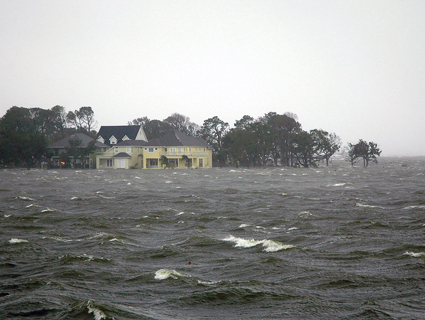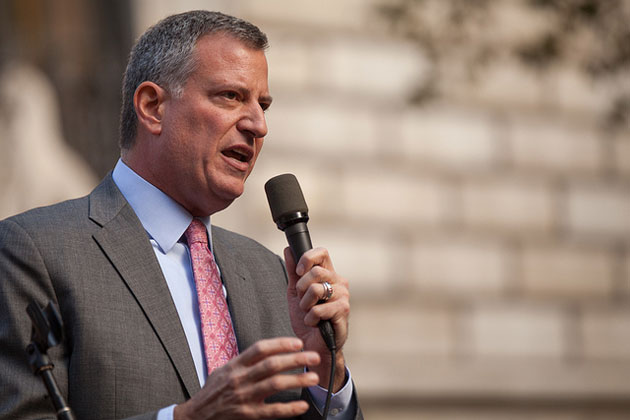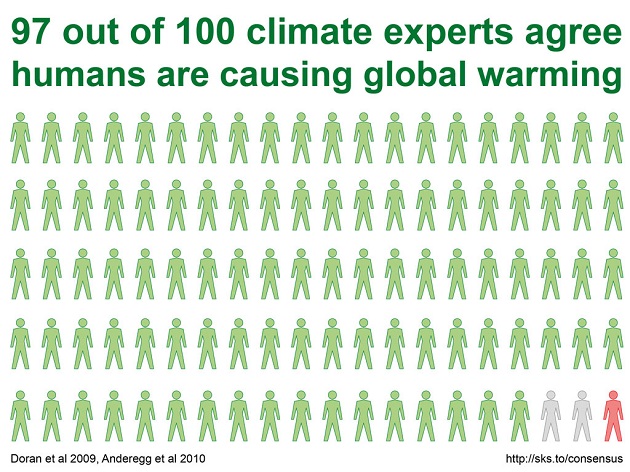
<a href="http://www.flickr.com/photos/49952928@N04/5932714457/in/photolist-a3fHji-a3ib7w-a3fBR4-a3hYGL-a3fM4Z-a3fJk4-a3fPV6-a3fzV6-a3fKkT-a3fAiR-a3fD1k-a3fJFH-a3fBqV-a3fqVz-a3fJ1P-a3fas4-a3iB2s-a3fyNP-a3iGdb-a3irbs-a3iEsd-a3iHXS-a3iDoy-a3iBKf-a3fCBz-a3fEbv-a3hTyC-a3iyfu-a3fB4k-a3ijP9-aCPSmY-qFJeo-qFJcx-qFJ8Y-qFJ84-qFJ7s-qFJ8C-qFJ3o-ggczd-ggcrb-2FR3XM-7gTUmH-7gXSe9-7gTWLa-7gTV5n-7gTSwX-7gXPTb-7gTSNc-7gXQ2w-PZDzB-74H96d">paolaharvey</a>/Flickr
This story first appeared on the TomDispatch website.
A week after the most powerful “super typhoon” ever recorded pummeled the Philippines, killing thousands in a single province, and three weeks after the northern Chinese city of Harbin suffered a devastating “airpocalypse,” suffocating the city with coal-plant pollution, government leaders beware! Although individual events like these cannot be attributed with absolute certainty to increased fossil fuel use and climate change, they are the type of disasters that, scientists tell us, will become a pervasive part of life on a planet being transformed by the massive consumption of carbon-based fuels. If, as is now the case, governments across the planet back an extension of the carbon age and ever increasing reliance on “unconventional” fossil fuels like tar sands and shale gas, we should all expect trouble. In fact, we should expect mass upheavals leading to a green energy revolution.
![]() None of us can predict the future, but when it comes to a mass rebellion against the perpetrators of global destruction, we can see a glimmer of the coming upheaval in events of the present moment. Take a look and you will see that the assorted environmental protests that have long bedeviled politicians are gaining in strength and support. With an awareness of climate change growing and as intensifying floods, fires, droughts, and storms become an inescapable feature of daily life across the planet, more people are joining environmental groups and engaging in increasingly bold protest actions. Sooner or later, government leaders are likely to face multiple eruptions of mass public anger and may, in the end, be forced to make radical adjustments in energy policy or risk being swept aside.
None of us can predict the future, but when it comes to a mass rebellion against the perpetrators of global destruction, we can see a glimmer of the coming upheaval in events of the present moment. Take a look and you will see that the assorted environmental protests that have long bedeviled politicians are gaining in strength and support. With an awareness of climate change growing and as intensifying floods, fires, droughts, and storms become an inescapable feature of daily life across the planet, more people are joining environmental groups and engaging in increasingly bold protest actions. Sooner or later, government leaders are likely to face multiple eruptions of mass public anger and may, in the end, be forced to make radical adjustments in energy policy or risk being swept aside.
In fact, it is possible to imagine such a green energy revolution erupting in one part of the world and spreading like wildfire to others. Because climate change is going to inflict increasingly severe harm on human populations, the impulse to rebel is only likely to gain in strength across the planet. While circumstances may vary, the ultimate goal of these uprisings will be to terminate the reign of fossil fuels while emphasizing investment in and reliance upon renewable forms of energy. And a success in any one location is bound to invite imitation in others.
A wave of serial eruptions of this sort would not be without precedent. In the early years of twentieth-first century, for example, one government after another in disparate parts of the former Soviet Union was swept away in what were called the “color revolutions“—populist upheavals against old-style authoritarian regimes. These included the “Rose Revolution” in Georgia (2003), the “Orange Revolution” in Ukraine (2004), and the “Pink” or “Tulip Revolution” in Kyrgyzstan (2005). In 2011, a similar wave of protests erupted in North Africa, culminating in what we call the Arab Spring.
Like these earlier upheavals, a “green revolution” is unlikely to arise from a highly structured political campaign with clearly identified leaders. In all likelihood, it will erupt spontaneously, after a cascade of climate-change induced disasters provokes an outpouring of public fury. Once ignited, however, it will undoubtedly ratchet up the pressure for governments to seek broad-ranging, systemic transformations of their energy and climate policies. In this sense, any such upheaval—whatever form it takes—will prove “revolutionary” by seeking policy shifts of such magnitude as to challenge the survival of incumbent governments or force them to enact measures with transformative implications.
Foreshadowings of such a process can already be found around the globe. Take the mass environmental protests that erupted in Turkey this June. Though sparked by a far smaller concern than planetary devastation via climate change, for a time they actually posed a significant threat to Prime Minister Recep Tayyip Erdogan and his governing party. Although his forces eventually succeeded in crushing the protests—leaving four dead, 8,000 injured, and 11 blinded by tear-gas canisters—his reputation as a moderate Islamist was badly damaged by the episode.
 Like so many surprising upheavals on this planet, the Turkish uprising had the most modest of beginnings: on May 27th, a handful of environmental activists blocked bulldozers sent by the government to level Gezi Park, a tiny oasis of greenery in the heart of Istanbul, and prepare the way for the construction of an upscale mall. The government responded to this small-scale, non-violent action by sending in riot police and clearing the area, a move that enraged many Turks and prompted tens of thousands of them to occupy nearby Taksim Square. This move, in turn, led to an even more brutal police crackdown and then to huge demonstrations in Istanbul and around the country. In the end, mass protests erupted in 70 cities, the largest display of anti-government sentiment since Erdogan’s Justice and Development Party came to power in 2002.
Like so many surprising upheavals on this planet, the Turkish uprising had the most modest of beginnings: on May 27th, a handful of environmental activists blocked bulldozers sent by the government to level Gezi Park, a tiny oasis of greenery in the heart of Istanbul, and prepare the way for the construction of an upscale mall. The government responded to this small-scale, non-violent action by sending in riot police and clearing the area, a move that enraged many Turks and prompted tens of thousands of them to occupy nearby Taksim Square. This move, in turn, led to an even more brutal police crackdown and then to huge demonstrations in Istanbul and around the country. In the end, mass protests erupted in 70 cities, the largest display of anti-government sentiment since Erdogan’s Justice and Development Party came to power in 2002.
This was, in the most literal sense possible, a “green” revolution, ignited by the government’s assault on the last piece of greenery in central Istanbul. But once the police intervened in full strength, it became a wide-ranging rebuke to Erdogan’s authoritarian impulses and his drive to remake the city as a neo-Ottoman showplace—replete with fancy malls and high-priced condominiums—while eliminating poor neighborhoods and freewheeling public spaces like Taksim Square. “It’s all about superiority, and ruling over the people like sultans,” declared one protestor. It’s not just about the trees in Gezi Park, said another: “We are here to stand up against those who are trying to make a profit from our land.”
The Ningbo Rebellion
The same trajectory of events—a small-scale environmental protest evolving into a full-scale challenge to governmental authority—can be seen in other mass protests of recent years.
Take a Chinese example: in October 2012, students and middle class people joined with poor farmers to protest the construction of an $8.8 billion petrochemical facility in Ningbo, a city of 3.4 million people south of Shanghai. In a country where environmental pollution has reached nearly unprecedented levels, these protests were touched off by fears that the plant, to be built by the state-owned energy company Sinopec with local government support, would produce paraxylene, a toxic substance used in plastics, paints, and cleaning solvents.
Here, too, the initial spark that led to the protests was small-scale. On October 22nd, some 200 farmers obstructed a road near the district government’s office in an attempt to block the plant’s construction. After the police were called in to clear the blockade, students from nearby Ningbo University joined the protests. Using social media, the protestors quickly enlisted support from middle-class residents of the city who converged in their thousands on downtown Ningbo. When riot police moved in to break up the crowds, the protestors fought back, attacking police cars and throwing bricks and water bottles. While the police eventually gained the upper hand after several days of pitched battles, the Chinese government concluded that mass action of this sort, occurring in the heart of a major city and featuring an alliance of students, farmers, and young professionals, was too great a threat. After five days of fighting, the government gave in, announcing the cancellation of the petrochemical project.
The Ningbo demonstrations were hardly the first such upheavals to erupt in China. They did, however, highlight a growing governmental vulnerability to mass environmental protest. For decades, the reigning Chinese Communist Party has justified its monopolistic hold on power by citing its success in generating rapid economic growth. But that growth means the use of ever more fossil fuels and petrochemicals, which, in turn, means increased carbon emissions and disastrous atmospheric pollution, including one “airpocalypse” after another.
Until recently, most Chinese seemed to accept such conditions as the inevitable consequences of growth, but it seems that tolerance of environmental degradation is rapidly diminishing. As a result, the party finds itself in a terrible bind: it can slow development as a step toward cleaning up the environment, incurring a risk of growing economic discontent, or it can continue its growth-at-all-costs policy, and find itself embroiled in a firestorm of Ningbo-style environmental protests.
This dilemma—the environment versus the economy—has proven to be at the heart of similar mass eruptions elsewhere on the planet.
After Fukushima
Two of the largest protests of this sort were sparked by the reactor meltdowns at the Fukushima Daiichi nuclear power plants on March 11, 2011, after a massive tsunami struck northern Japan. In both of these actions—the first in Germany, the second in Japan—the future of nuclear power and the survival of governments were placed in doubt.
The biggest protests occurred in Germany. On March 26th, 15 days after the Fukushima explosions, an estimated 250,000 people participated in anti-nuclear demonstrations across the country—100,000 in Berlin, and up to 40,000 each in Hamburg, Munich, and Cologne. “Today’s demonstrations are just the prelude to a new, strong, anti-nuclear movement,” declared Jochen Stay, a protest leader. “We’re not going to let up until the plants are finally mothballed.”
At issue was the fate of Germany’s remaining nuclear power plants. Although touted as an attractive alternative to fossil fuels, nuclear power is seen by most Germans as a dangerous and unwelcome energy option. Several months prior to Fukushima, German Chancellor Angela Merkel insisted that Germany would keep its 17 operating reactors until 2040, allowing a smooth transition from the country’s historic reliance on coal to renewable energy for generating electricity. Immediately after Fukushima, she ordered a temporary shutdown of Germany’s seven oldest reactors for safety inspections but refused to close the others, provoking an outpouring of protest.
Witnessing the scale of the demonstrations, and after suffering an electoral defeat in the key state of Baden-Württemberg, Merkel evidently came to the conclusion that clinging to her position would be the equivalent of political suicide. On May 30th, she announced that the seven reactors undergoing inspections would be closed permanently and the remaining 10 would be phased out by 2022, almost 20 years earlier than in her original plan.
By all accounts, the decision to phase out nuclear power almost two decades early will have significant repercussions for the German economy. Shutting down the reactors and replacing them with wind and solar energy will cost an estimated $735 billion and take several decades, producing soaring electricity bills and periodic energy shortages. However, such is the strength of anti-nuclear sentiment in Germany that Merkel felt she had no choice but to close the reactors anyway.
The anti-nuclear protests in Japan occurred considerably later, but were no less momentous. On July 16, 2012, 16 months after the Fukushima disaster, an estimated 170,000 people assembled in Tokyo to protest a government plan to restart the country’s nuclear reactors, idled after the disaster. This was not only Japan’s largest antinuclear demonstration in many years, but the largest of any sort to occur in recent memory.
For the government, the July 16th action was particularly significant. Prior to Fukushima, most Japanese had embraced the country’s growing reliance on nuclear power, putting their trust in the government to ensure its safety. After Fukushima and the disastrous attempts of the reactors’ owner, the Tokyo Electric Power Company (TEPCO), to deal with the situation, public support for nuclear power plummeted. As it became increasingly evident that the government had mishandled the crisis, people lost faith in its ability to exercise effective control over the nuclear industry. Repeated promises that nuclear reactors could be made safe lost all credibility when it became known that government officials had long collaborated with TEPCO executives in covering up safety concerns at Fukushima and, once the meltdowns occurred, in concealing information about the true scale of the disaster and its medical implications.
The July 16th protest and others like it should be seen as a public vote against the government’s energy policy and oversight capabilities. “Japanese have not spoken out against the national government,” said one protestor, a 29-year-old homemaker who brought her one-year-old son. “Now, we have to speak out, or the government will endanger us all.”
Skepticism about the government, rare for twenty-first-century Japan, has proved a major obstacle to its desire to restart the country’s 50 idled reactors. While most Japanese oppose nuclear power, Prime Minister Shinzo Abe remains determined to get the rectors running again in order to reduce Japan’s heavy reliance on imported energy and promote economic growth. “I think it is impossible to promise zero [nuclear power plants] at this stage,” he declared this October. “From the government’s standpoint, [nuclear plants] are extremely important for a stable energy supply and economic activities.”
Despite such sentiments, Abe is finding it extremely difficult to garner support for his plans, and it is doubtful that significant numbers of those reactors will be coming online anytime soon.
The Explosions Ahead
What these episodes tell us is that people around the world are becoming ever more concerned about energy policy as it affects their lives and are prepared—often on short notice—to engage in mass protests. At the same time, governments globally, with rare exceptions, are deeply wedded to existing energy policies. These almost invariably turn them into targets, no matter what the original spark for mass opposition. As the results of climate change become ever more disruptive, government officials will find themselves repeatedly choosing between long-held energy plans and the possibility of losing their grip on power.
Because few governments are as yet prepared to launch the sorts of efforts that might even begin to effectively address the peril of climate change, they will increasingly be seen as obstacles to essential action and so as entities that need to be removed. In short, climate rebellion—spontaneous protests that may at any moment evolve into unquenchable mass movements—is on the horizon. Faced with such rebellions, recalcitrant governments will respond with some combination of accommodation to popular demands and harsh repression.
Many governments will be at risk from such developments, but the Chinese leadership appears to be especially vulnerable. The ruling party has staked its future viability on an endless carbon-fueled growth agenda that is steadily destroying the country’s environment. It has already faced half-a-dozen environmental upheavals like the one in Ningbo, and has responded to them by agreeing to protestors’ demands or by employing brute force. The question is: How long can this go on?
Environmental conditions are bound to worsen, especially as China continues to rely on coal for home heating and electrical power, and yet there is no indication that the ruling Communist Party is prepared to take the radical steps required to significantly reduce domestic coal consumption. This translates into the possibility of mass protests erupting at any time and on a potentially unprecedented scale. And these, in turn, could bring the Party’s very survival into question—a scenario guaranteed to produce immense anxiety among the country’s top leaders.
And what about the United States? At this point, it would be ludicrous to say that, as a result of popular disturbances, the nation’s political leadership is at any risk of being swept away or even forced to take serious steps to scale back reliance on fossil fuels. There are, however, certainly signs of a growing nationwide campaign against aspects of fossil fuel reliance, including vigorous protests against hydraulic fracturing (“fracking”) and the Keystone XL tar sands pipeline.
For environmental activist and writer Bill McKibben, all this adds up to an incipient mass movement against the continued consumption of fossil fuels. “In the last few years,” he has written, this movement “has blocked the construction of dozens of coal-fired power plants, fought the oil industry to a draw on the Keystone pipeline, convinced a wide swath of American institutions to divest themselves of their fossil fuel stocks, and challenged practices like mountaintop-removal coal mining and fracking for natural gas.” It may not have achieved the success of the drive for gay marriage, he observed, but it “continues to grow quickly, and it’s starting to claim some victories.”
If it’s still too early to gauge the future of this anti-carbon movement, it does seem, at least, to be gaining momentum. In the 2013 elections, for example, three cities in energy-rich Colorado—Boulder, Fort Collins, and Lafayette—voted to ban or place moratoriums on fracking within their boundaries, while protests against Keystone XL and similar projects are on the rise.
Nobody can say that a green energy revolution is a sure thing, but who can deny that energy-oriented environmental protests in the US and elsewhere have the potential to expand into something far greater? Like China, the United States will experience genuine damage from climate change and its unwavering commitment to fossil fuels in the years ahead. Americans are not, for the most part, passive people. Expect them, like the Chinese, to respond to these perils with increased ire and a determination to alter government policy.
So don’t be surprised if that green energy revolution erupts in your neighborhood as part of humanity’s response to the greatest danger we’ve ever faced. If governments won’t take the lead on an imperiled planet, someone will.
Michael T. Klare is a professor of peace and conflict studies at Hampshire College and the author, most recently, of The Race for What’s Left. A documentary movie version of his book Blood and Oil is available from the Media Education Foundation. Follow TomDispatch on Twitter and join us on Facebook or Tumblr. Check out the newest Dispatch Book, Ann Jones’s They Were Soldiers: How the Wounded Return From America’s Wars—The Untold Story. To stay on top of important articles like these, sign up to receive the latest updates from TomDispatch.com here.












